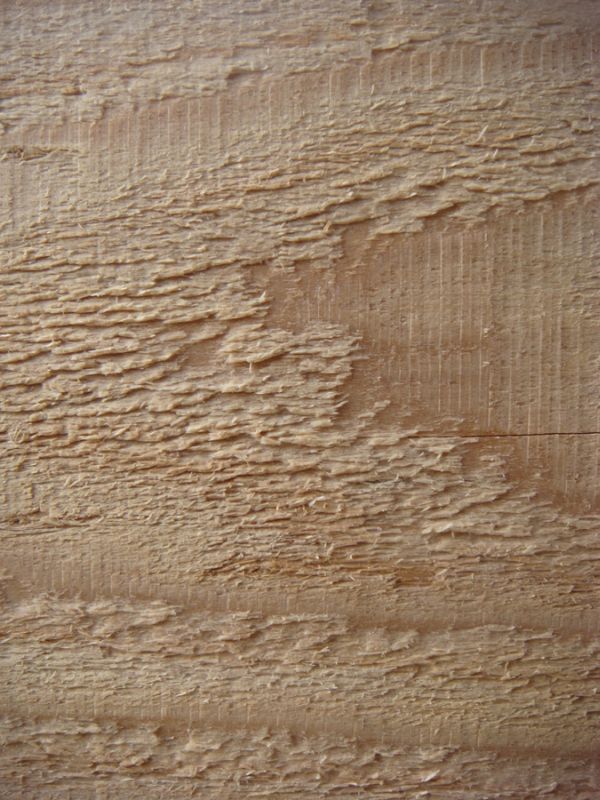Producing a Rough-Faced Board
Thoughts on reproducing the surface appearance of rough bandsaw milled wood, starting with finished lumber, on a large scale. December 6, 2012
Question
I need to produce a standard S1S2E board on our 5 head moulder. The one rough face of the existing products that I have seen has been machined for thickness, but almost looks to be sandblasted. Does anyone know how this is accomplished?
Forum Responses
(Solid Wood Machining Forum)
From contributor B:
We occasionally have to produce a rough sawn face curved moulding. Since all our mouldings go through the wide belt sander during production, this means the rough texture has to be recreated.
We accomplish this with an old drill mounted paint stripping tool. It has a center hub that is about 4" diameter and 6" long wires stick out all around the edge. The wires are about the same gauge as clothes hangers and have pointed ends. The tool is about 2" wide and when spun against the board surface, creates a relatively decent looking rough sawn appearance.
This will probably work for you if you have just one or two boards to produce. It obviously wouldn't be a solution for a production situation.
From Professor Gene Wengert, Sawing and Drying Forum technical advisor:
3-M has a product designed to do this. It is called Brushlon. It is similar to what contributor B described.
From the original questioner:
Thank you. I am looking for a production sized solution. Hundreds of thousands of lineal feet of 1x4, 6 and 8 cypress. Here are a couple images of the surface that I am trying to match. It does appear to be a cross grain brush or cutter of some sort. I know this product is made in very large quantities, so there is a power fed mechanization involved. Does this look like something that could be produced in soft wood with Brushalon?

Click here for higher quality, full size image

Click here for higher quality, full size image
From contributor B:
That looks to me like it's right from a band mill. Might not be a bad idea to post the photos over at the Sawing and Drying forum and see what those guys think. You might also resaw a board or two with a coarse blade (1 tpi perhaps) and see if it gives the correct appearance.
From contributor M:
Looks like it has been through a band resaw. We have had good luck using a 54" McDonough Band Resaw. You can either skim a piece off the edge or place 2 pieces face to face and resaw down the center of the two boards, giving the rough face on both pieces. Not as precise, as the blade may wander a bit, but you can do several thousand feet per hour. Many wholesalers will offer resaw service on customer stock.
From the original questioner:
Thanks. I think you both may be right. It does look like bandsaw marks on the denser wood. I haven't seen a bandsaw make the softer wood pull or roll up like this seems to. But I will experiment with some different blades and see what I can get.
From contributor M:
When experimenting with the blades, try as thick a kerf as you can, and you may want to make a couple high teeth to get the desired effect. Then when you are running through the moulder, clean the bed well and run resawn face down. That way you can have the top head get to final thickness without touching the resawn face.
From contributor D:
If not resawing, try running the side against a bandsaw blade in the opposite direction as normal.

